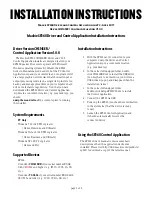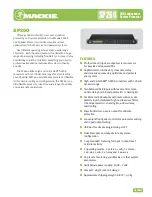
Program Control
3
3 – 24
The ALU overflow latch mode causes the AV status bit to “stick” once it is
set. In this mode, AV will be set by an overflow and will remain set even if
subsequent ALU operations do not generate overflows. AV can then be
cleared only by writing a zero into it.
AR saturation mode, when enabled, causes AR to be saturated to the
maximum positive (0x7FFF) or negative (0x8000) values whenever an
ALU overflow occurs.
The MAC result placement mode determines whether the multiplier
operates in integer or fractional format. This mode is discussed in Chapter
2, “Computational Units.”
Setting the timer enable bit causes the timer to begin decrementing.
Clearing this bit halts the timer.
Enabling GO mode allows the processor to continue executing instructions
from internal program memory during a bus grant. The processor will
halt, waiting for the buses to be released, only when an access of external
memory is required. When GO mode is disabled, the processor always
halts during bus grant.
3.6
CONDITIONAL INSTRUCTIONS
The condition logic circuit of the program sequencer determines whether a
conditional instruction is executed, for example a jump, call, or arithmetic
operation. It also controls implicit loop sequencing operations based upon
the loop continuation condition on top of the loop stack. The condition
logic takes raw status information from ASTAT and the down counter and
derives a set of sixteen composite status conditions.
The status conditions and corresponding assembly language syntax are
listed in Table 3.9. These status conditions are used with the IF condition
clause available on some instructions. In addition, the status of the FI pin
(Flag In) can also be used as a condition for JUMP and CALL instructions.
















































